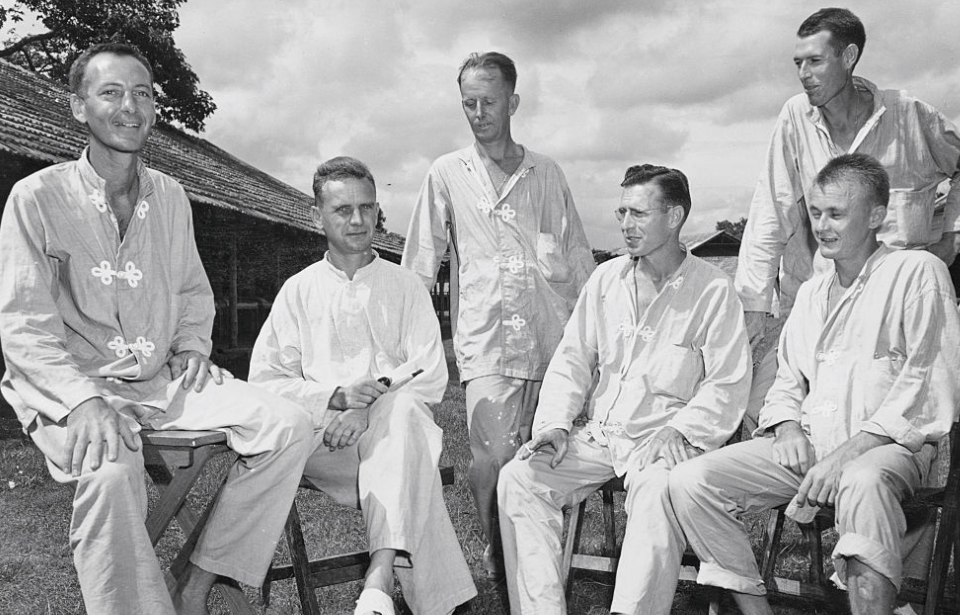Everyone is aware of the Lost Battalion of the Meuse-Argonne Offensive; 554 men from the US 77th Division who became trapped by the Germans in the Forest of Argonne. Far fewer know about the Lost Battalions of World War II. In both the European and Pacific Theaters, soldiers with the 36th Infantry Division – part of the Texas Army National Guard – found themselves cut off from their comrades and in need of rescue.
Lost Battalion in the European Theater
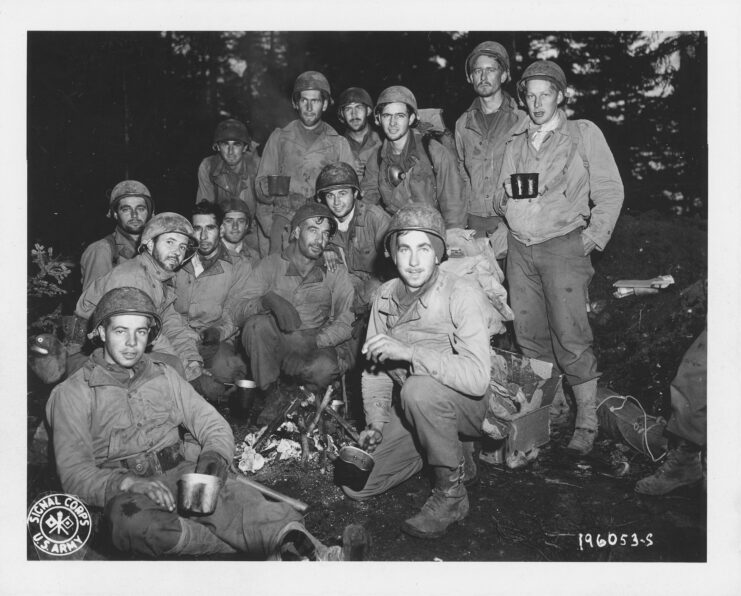
As aforementioned, there were two Lost Battalions during World War II. In the European Theater, it was the 1st Battalion, 141st Infantry Regiment, 36th Infantry Division – better known as the “Texas Battalion.”
On October 24, 1944, Maj. Gen. John E. Dahlquist ordered the Texas Battalion to advance through the mountains outside of the French commune of Biffontaine. The mission seemed easy enough; the group advanced four miles, over two hills, without a hint of resistance from the Germans. Sure, the terrain was difficult and the fog so thick that they sometimes couldn’t see more than 10 feet ahead of them, but, compared to their previous engagements, things appeared to be smooth sailing.
What they didn’t know, however, was that the enemy was lying in wait. The plan was to attack the Americans from the rear and cut off any chance of retreat with machine gun emplacements and landmines. Before the Texas Battalion knew it, they’d become trapped by at least 700 German soldiers.
Two attempts were made by the Allies to rescue the American troops, but each was repeled by the enemy.
Rescuing the Texas Battalion from their German captors
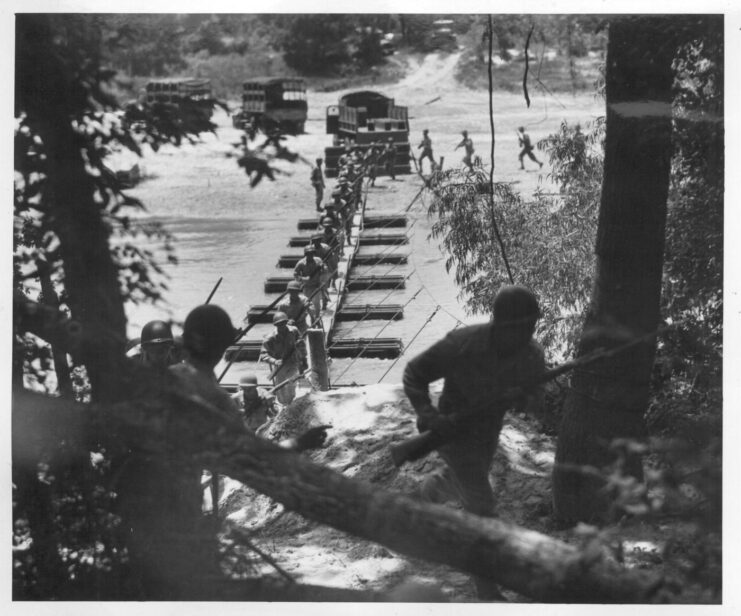
While it wasn’t uncommon for soldiers to get cut off by German columns during World War II, very few became known as Lost Battalions. This is what happened to the Texas Battalion, whose situation became dire as time went on. While attempts were made to airdrop supplies to the trapped men, they began to run dangerously low on ammunition. Without food, they were forced to drink muddy water, and crouched in fox holes to avoid enemy artillery and sniper fire.
On October 26, 1944, after a short period of rest upon taking Biffontaine and Bruyère, the 442nd Regimental Combat Team, a segregated unit made up of second-generation Japanese Americans, was called in to rescue the Texas Battalion. At first, they were ordered to launch a frontal attack, but knowing this would result in extremely heavy casualties, the decision was made to use a different approach.
The following day, the 442nd mobilized on both sides of the ridge line, and, as they advanced, they had to contend with not just German landmines, but terrible weather, rough terrain and thick underbrush – less than ideal conditions, to say the least. Despite suffering heavy artillery fire, by October 28, they’d made it to within 1,500 yards of the Texas Battalion, allowing them to prepare for a final push the next day.
Supported by a tank platoon, the 442nd advanced on the Germans. With orders to “fix” their bayonets, I and K Companies fired their rifles and moved forward, causing the enemy soldiers to flee. At the rear, E and F Companies began a pincer movement and cut off the Germans, while G Company advanced from the front. With nowhere to run, the enemy troops accepted their fate and were annihilated.
The 442nd Regimental Combat Team is honored for their actions
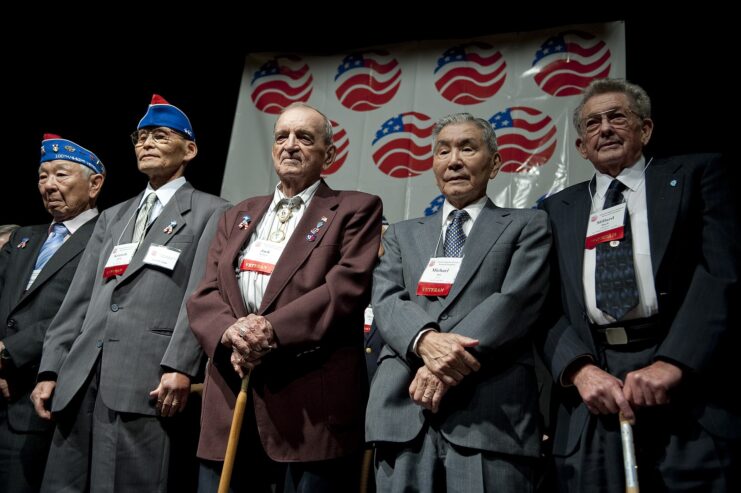
Despite the discriminatory treatment they faced throughout their service, especially following the Japanese attack on Pearl Harbor, the 442nd Regimental Combat Team bravely fought throughout the European Theater.
In 1962, less than 20 years after World War II, the servicemen were honored for saving the Lost Battalion in France. Texas Gov. John Connally named them honorary Texans, and decades after the rescue, three members – James Okubo, Barney Hajiro and George Sakato – were awarded the Medal of Honor for their actions.
In 2011, the unit was awarded the Congressional Gold Medal, following the passing of Public Law 111-254 the previous year.
Lost Battalion in the Pacific Theater
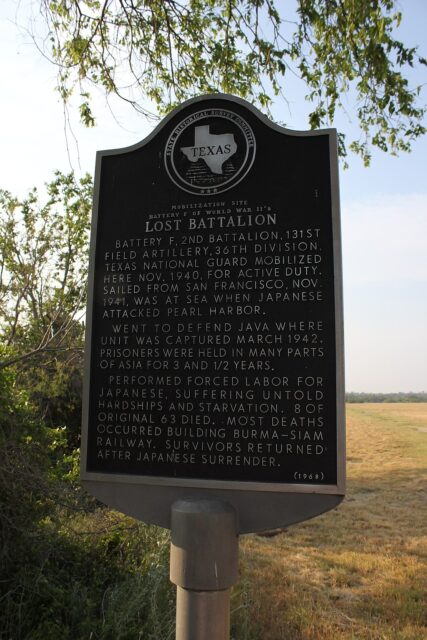
The second Lost Battalion of World War II served in the Dutch East Indies. Mobilized in November 1940, the 2nd Battalion, 131st Field Artillery, 36th Infantry Division was initially assigned to the Philippines, before being rerouted to Brisbane, Australia, then the island of Java. While there, the servicemen served as the ground crew for the 19th Heavy Bombardment Group. They were also tasked with providing ground defense against a potential Japanese invasion.
They did just that on February 27, 1942 with the Battle of the Java Sea, which was quickly followed by the Battle of Java. While the 2nd distinguished itself during the fighting – so much so that it was later awarded the Presidential Unit Citation – its members were later taken as prisoners of war (POWs) when the Japanese captured the island, along with 32,500 other Allied soldiers.
Building the Burma Railway
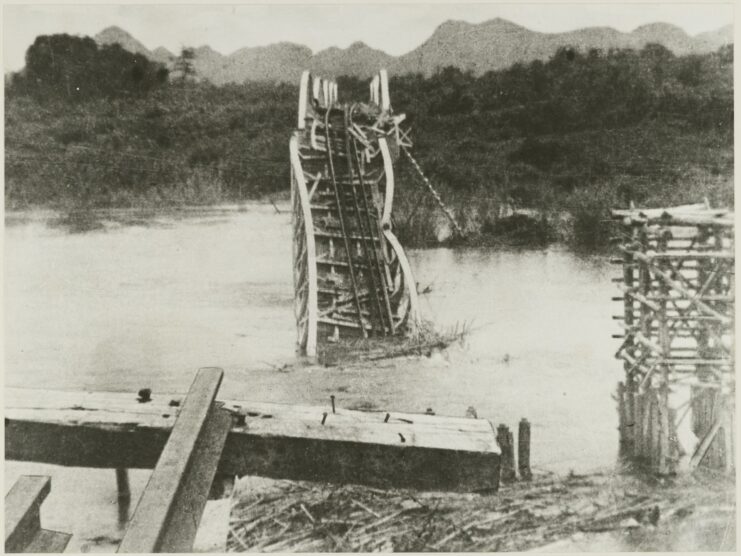
Along with the Allied prisoners of war from the island of Java, the Japanese also captured 368 surviving crewmen from the USS Houston (CA-30), which was sunk during the naval engagement. The sailors, 534 members of the 2nd Battalion and the other POWs were held on Java for seven months, before being moved to Singapore, where 140 Americans were taken from the group and sent to Japan as forced laborers.
The remainder of the POWs were paired with Southeast Asian laborers to construct the 258-mile-long Burma Railway, which was intended to connect Burma to Thailand. To say conditions were brutal would be putting it lightly. The prisoners were provided little food and water, and with insufficient medical care often fell victim to wounds that could have otherwise been treated. When paired with heavy work quotas and murderous guards, many didn’t survive.
The events surrounding the Burma Railway are among the worst to have occurred in the Pacific Theater during World War II, and the Lost Battalion witnessed it all firsthand. After it was completed, the POWs were split up, tasked with maintaining the railway or sent to either Thailand, Japan or Vietnam.
All this time, the US military didn’t know what had become of the 2nd. It wasn’t until a Japanese freighter carrying Australian and British POWs was sunk by an American submarine in September 1944 that officials became aware that many of the battalion’s members were still alive.
More from us: Four Men Aboard the USS California (BB-44) Were Awarded the Medal of Honor
Following the conclusion of the war, the surviving soldiers of the 2nd were repatriated to the US; of the 534 who’d been captured by the Japanese, 86 died during their imprisonment.
